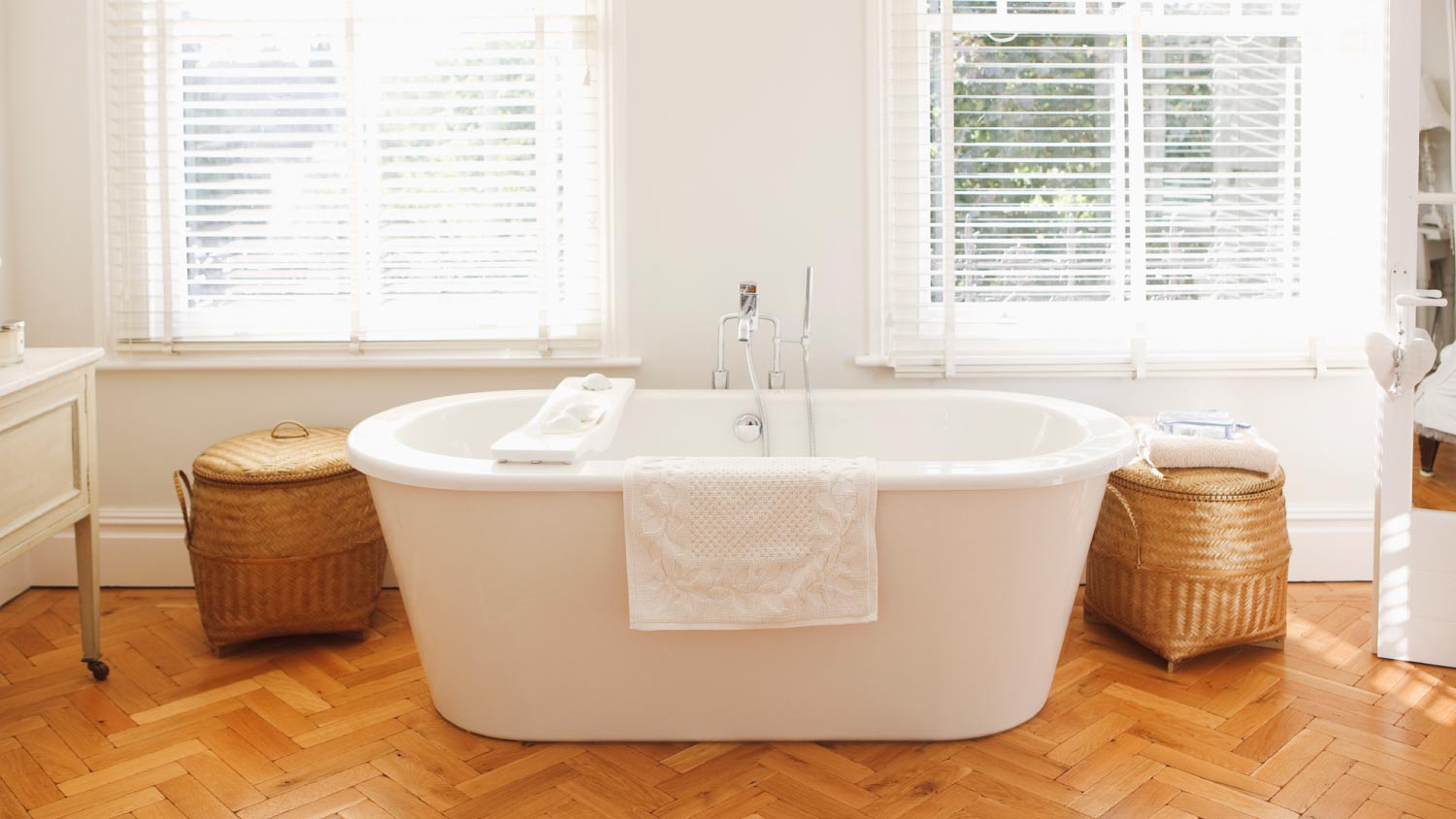
How much does a kitchen remodel cost? Find out the average cost and where you can save money on the path to building your ideal cooking space.
You’ll be up to your elbows in dishes in no time


If you're in the market for a new kitchen sink, you're likely wondering what size sink you can fit into your space. Knowing how to measure kitchen sink dimensions is an easy DIY project you can tackle in less than an hour. But there are a few details you need to know.
If you already have a sink in the space, you'll measure that—but first you need to determine what type of sink you already have. There are three main types of kitchen sinks:
Drop-in
Undermount
Apron or farmhouse
A drop-in sink is the standard style, where the lip of the sink rests on top of the counter. Undermount sinks are installed underneath the counter and have a concealed rim. Finally, farmhouse, or apron, sinks have a fully exposed front. They are often deeper than drop-in or undermount sinks.
Once you've identified the type of sink, turn off your water supply to the bathroom. Also, ensure the sink is clean and dry before measuring. You don't want to end up with a wet arm or accidentally put your elbow into a dirty bowl.
If you don't yet have a sink in the counter space, no worries—you'll just have to measure the opening instead of an existing sink.

Measure the three dimensions of the sink or empty area where the sink will go:
The length, from left to right
The depth, from the top of the sink to the interior bottom
The width, from the faucet to the front of the counter (if there is an existing sink)
Write down each measurement as you go.

The size of your existing sink doesn't necessarily dictate the size of your next sink. Your cabinet's overall size does, though. If your cabinet is too small, you may need to replace it along with your sink.
The two cabinet measurements that matter are depth and width. While sink depth refers to the size of the bowl, you measure cabinet depth from the back of the cabinet, against the wall, to the front.
Measure the width of the cabinet from left to right.
To get an accurate idea of the sink size your cabinet can support, subtract one inch from the depth measurement (so the sink isn't flush with the wall) and four inches from the width measurement. Write down these measurements.

Disconnect the faucet, water lines, and drain attachments from the sink, then remove the entire sink from the cutout, if you already have a sink there.
Next, measure the width and length of the cutout. If you're installing a drop-in sink, pay attention to the space on each side of the cutout, as you'll need room for the sink's lip. Write down these measurements.
Measuring a kitchen sink is a relatively simple DIY, but if you want to be absolutely sure the job is done well, you may want to hire a local sink installation company to do it for you. As an added benefit, a sink installer can help you choose the next sink for your kitchen and install it correctly for you, too.
From average costs to expert advice, get all the answers you need to get your job done.

How much does a kitchen remodel cost? Find out the average cost and where you can save money on the path to building your ideal cooking space.

Remodeling your bathroom can add significant value to your home. Your bathroom remodel cost in Columbus, OH will depend on size, fixtures, materials, labor, and other factors.

A bump-out addition is right for you if you want to add extra space to your home without adding a new room. Learn about the different bump-out addition costs.

An updated bathtub can give a bathroom a whole new look. Find out how much it costs to replace a bathtub in New York, NY, including prices by type and labor costs.

The minimum distance between a toilet and bathroom vanity is 15 inches, but that’s not ideal. This guide will help you choose the right placement.

When planning a bathroom remodel for older adults, start by evaluating the mobility needs of the specific individuals residing in the home.